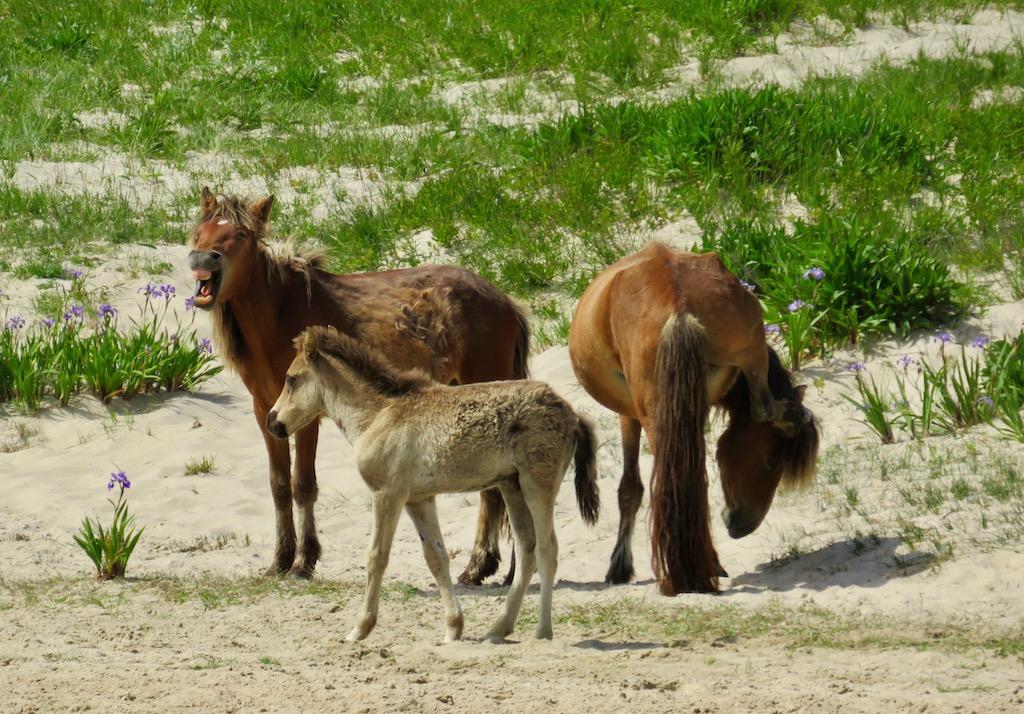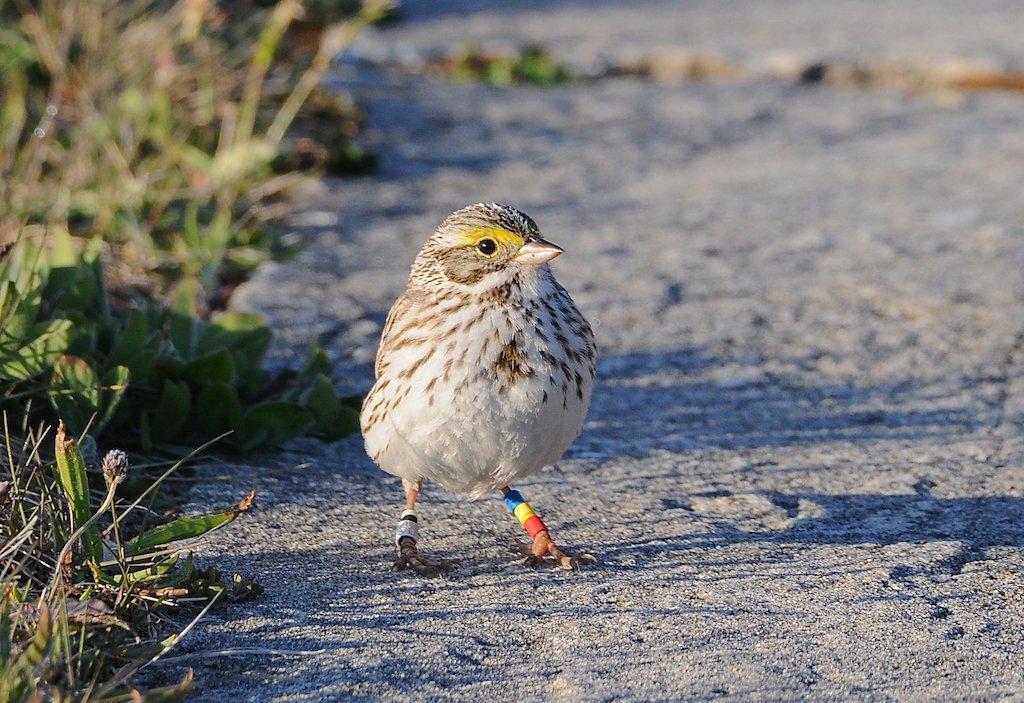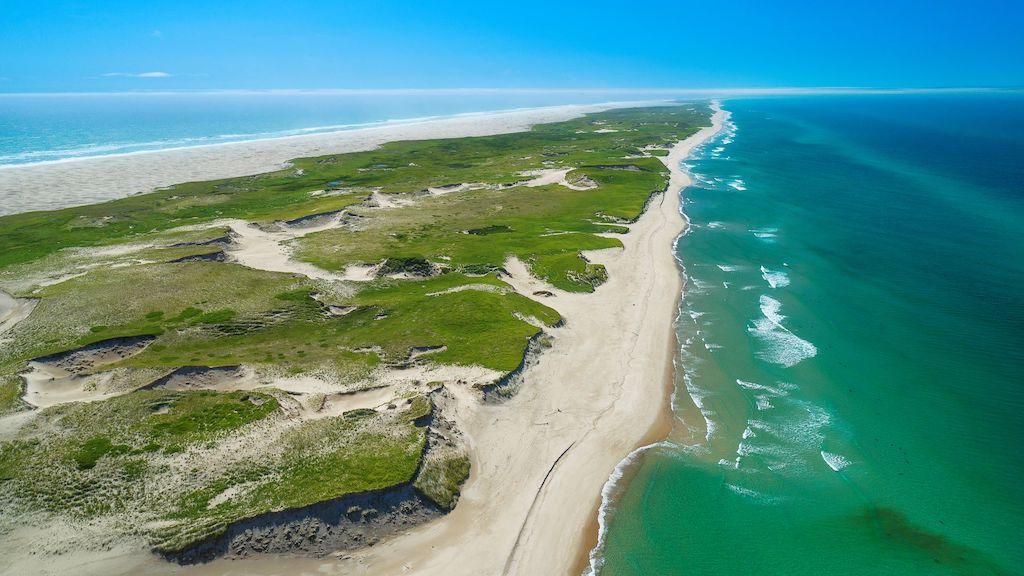Call Of The Wild Horses On Sable Island
By Maureen Littlejohn
Cinched into my foul weather gear, I swished my rubber boots in the disinfectant bath, then headed to the Zodiac. Sable Island National Park Reserve is one of Canada’s most difficult national park reserves to access. Only around 450 visitors are allowed a year (between June and October) and everyone must follow biosecurity procedures to protect the island’s fragile ecosystem, which is essential for the health of flora and fauna, especially the wild horses. There is also inclement weather to consider. I was on an expedition cruise of the Gulf of St. Lawrence and had been told the night before that delays and cancellations were common, and that we might not even be able to land.
Incessant fog, high winds and choppy seas have always made approaching this island tricky. Although near the Gulf of St. Lawrence and part of Nova Scotia, Sable Island is actually located in a treacherous part of the Atlantic Ocean. More than 350 ships have gone down near her shores due to ever shifting, hidden sand bars.
This was our first stop. People are allowed to come only for a day visit through pre-arranged tours via expedition cruise tours or chartered planes. Parks Canada provides a guide for groups for a fee.
Our captain had expected we could land the Zodiacs on the island’s north shore. But due to high winds, he circled around to the south shore which was a little more accessible. It was a wild ride with waves crashing all around us. After a rocky landing on the beach, we stomped ashore, our gear just a little damp.

Sable Island's wild horses have adapted to the harsh conditions by growing thick coats/Maureen Littlejohn
Sable Island, 290 kilometres (180 miles) southeast of Halifax and 175 kilometres (109 miles) from land, is one of Canada’s furthest offshore islands. The crescent-shaped stretch of grass-covered dunes is 42 kilometres (26 miles) long and 1.3 kilometres (a little under a mile) at its widest point. Located on the edge of the rich fishing grounds of the Grand Banks, it attracts the world’s largest breeding colony of Grey seals (400,000), and is the only place in the world where Ipswich sparrows nest. There are 190 species of plants, and 350 species of birds found here since it is a fresh water oasis, thanks to the ponds the hold snowmelt and rain.
The main draw for most, though, is its herd of wild horses.
Trudging over a sandy hill in our heavy boots, our group stopped in its tracks. A scruffy stallion, mare, and foal were standing by a pond, looking at us. “They are descendants of horses brought over during the 1700s to help settle the island,” explained our Parks Canada guide George Woodhouse. Natural selection and genetic drift (the random distribution of genes), he said, has created a population unlike any other. The horses were small and sturdy, with thick coats adapted to the island’s harsh conditions.
Just then, another family group came trotting by. “Always give the horses the right of way. This is their home,” Woodhouse said. I stood back with a huge grin on my face and watched the shaggy creatures join the others for a drink at the pond. He also explained there was absolutely no petting, feeding, or attempts at riding.
Each summer, a University of Saskatchewan research team monitors the horse population that has grown from the original 150 to 579 according to the 2019 survey. Even the researchers do not get too close to them.

Sable Island is the only nesting place in the world for Ipswich sparrow/Sable Island National Park Reserve/Greg Stroud
How do the horses survive? By eating the abundant marram, or beach grass, that covers a third of the island. On the western half of the island, they drink from freshwater ponds, but on the eastern half where there are no ponds, they dig with their hooves for rainwater that collects under the sand. During storms any time of year they shelter in groups in the lee of dunes.
The horses have a shorter life expectancy than their stable-bound cousins due in part to the sand in the grasses that grinds down their teeth. Plus, there is more infant mortality because of the harsh conditions when a mare is foaling.
Walking up to another view point, I noticed tufts of horse hair tangled in the scrubby bushes, and a jawbone jutting out of the sand. The natural course of life takes place here. When the horses die the sand and wind take care of the remains. Nothing can be taken from the island. Old bottles, china and bricks are scattered about from the various shelters and inhabitants, not to mention odd shells and bones that littered the beach.
National park reserves are lands administered by Parks Canada as national parks pending settlement of Indigenous land rights. The Mi’kmaq of Nova Scotia have asserted Aboriginal rights and title to the Province of Nova Scotia, and Canada and Nova Scotia are negotiating this claim under the Made in Nova Scotia Process.
An early attempt to colonize the island came in the 1500s when Marquis de la Roche of France brought in 100 soldiers and 250 convicts and beggars. Revolt, murder and collapse ensued. The horses came later. The generally accepted theory is that today’s feral inhabitants are the descendants of equines brought by Boston minister Andrew le Mercier in 1737-1738. By the mid-1700s, the island also became home to horses confiscated by the British from the Acadians during their expulsion from Nova Scotia. Thomas Hancock, a Boston Merchant (uncle of John Hancock) was paid to transport the Acadians to Louisiana. He dropped off many of their horses, as well as cows, sheep, goats and hogs, hoping they would reproduce so he could sell them later. Only the horses survived.

Only a few hundred people get to see Sable Island's shifting sandbanks each year/Sable Island National Park Reserve/Gary Brinton
After Canada’s first lifesaving station opened in 1801, some of the horses were put to work hauling lifeboats and patrolling the beaches. The main lifesaving station and four smaller stations were needed because the shifting sands, high winds, fog, and strong currents were treacherous for sailing ships. The island, situated on a major shipping route between North America and Europe, was known as the Graveyard of the Atlantic. In 1867 two lighthouses were installed by the Canadian government.
My fellow shipmate, Douglas McWhirter, told me his great aunt had been stranded here in 1879 when the steamer State of Virginia went down. Most of the passengers survived, he said, and she ended up staying at the lifesaving station superintendent’s house for a week before continuing on to Europe.
“Where we landed today was where she would have landed. It dawned on me that I was standing on sacred ground,” McWhirter recalled. His great aunt arrived before the federal forestation project of 1901 when 80,000 trees were planted. But, Sable Island was not meant for trees. Today, there is a lone, five-foot Scotch Pine protruding from the sand.
As the years progressed, the number of shipwrecks decreased due to improvements in navigation. By 1958 the lifesaving station closed and a year later the herd of wild horses, grown to 250, was declared “surplus” by the Crown Assets Disposal Corporation in Ottawa. The media was full of rumours that they were to be shot and turned into dog food. Hundreds of school children wrote to Prime Minister John Diefenbaker pleading with him to stop the cull. In 1960 not only was the Crown Assets decision reversed, but the prime minister announced the herd was to be protected and preserved. In 2013 the island became part of the Parks Canada family, allowing public access to its sandy shores.
For most of us, Sable Island is a once-in-a-lifetime type of place to visit. And that’s OK, because anyone who connects with those tough little equines will remember them for the rest of their days.
Traveler footnote: The island gets its name from the French word for sand, "le sable."

 Support Essential Coverage of Essential Places
Support Essential Coverage of Essential Places




Comments
Sable Island is not a national park, as the author calls it in the first paragraph. It's correctly identified elsewhere, here, as a National Park RESERVE, set aside to become one, pending the settlement of Native land claims. These may or may not ever be settled. As we've seen with other NPRs, Reserve status can last 50+ years with no end in sight (see Pacific Rim NPR in BC).
It is disingenuous of the national park service to promote these places as if they had joined the park system. Yes, they are managed on an interim basis as if they are parks, but they are not. Let's do the work of completing the plan for ALL national park reserves so they might finally join the system.
Good point, Yoho. We've added a paragraph to explain the "reserve" status.